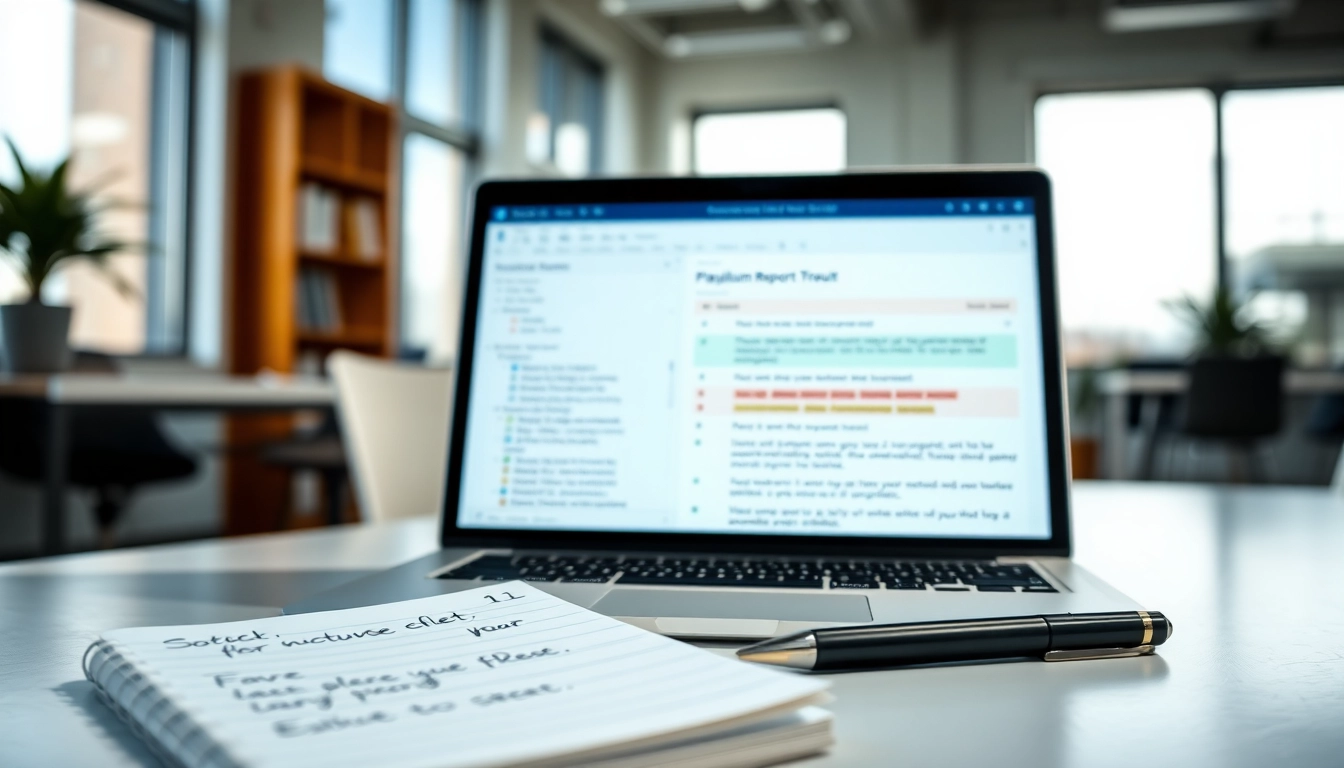Understanding Plagiarism and Its Implications
Plagiarism is a critical issue in academia, business, and content creation. As the lines between inspiration and appropriation blur, understanding the nuances of plagiarism becomes essential for students, educators, and professionals alike. The advent of digital content has made it easier to access information but has also increased the instances of plagiarism. Fortunately, there are tools available to help verify the originality of work, such as the plagiarism checker, which can ensure adherence to ethical writing practices.
What is Plagiarism?
Plagiarism is defined as the act of using someone else’s work or ideas without properly crediting the source. It can range from copying text verbatim to paraphrasing without citation. The seriousness of plagiarism can vary depending on the context—academic institutions often impose strict penalties, whereas in business settings, it can damage reputations and lead to legal consequences.
Types of Plagiarism
Understanding the different types of plagiarism can help individuals avoid them. Common forms include:
- Direct Plagiarism: Copying text word-for-word from a source without citation.
- Self-Plagiarism: Reusing one’s own previously published work without acknowledgment.
- Paraphrasing Plagiarism: Rephrasing someone else’s ideas without proper citation.
- Accidental Plagiarism: Unintentionally failing to cite sources or misquoting the original text.
Why Plagiarism Matters in Writing
Plagiarism undermines the integrity of scholarly work and creative endeavors. It perpetuates misinformation, harms credibility, and can have severe academic and professional consequences. By fostering original thought and proper attribution, writers contribute to the collective knowledge and respect intellectual property rights.
How a Plagiarism Checker Works
Plagiarism checkers are powerful tools designed to analyze text and identify any elements that may have been copied from other sources. These sophisticated systems utilize algorithms and databases to check for similarities.
Algorithms Behind Plagiarism Detection
Modern plagiarism checkers rely on a combination of algorithms to detect similarities. These may include:
- Text Matching: Comparing text to databases of articles, websites, and publications to identify copied content.
- Semantic Analysis: Understanding the meaning behind phrases to identify paraphrasing.
- Fingerprinting: Creating a unique “fingerprint” of a document to compare against other texts efficiently.
Steps to Use a Plagiarism Checker
Using a plagiarism checker is generally straightforward:
- Select Your Tool: Choose a reputable plagiarism checker that suits your needs.
- Upload Your Document: Most tools allow you to upload various file types.
- Run the Analysis: Initiate the scan and wait for the results.
- Review the Report: Examine the findings to understand which parts of your text may need revision.
Interpreting the Results
When reviewing the results from a plagiarism checker, it is crucial to understand what the findings indicate. Here are some common elements:
- Percentage Match: A percentage indicating how much of the submitted text matches other sources.
- Color Codes: Many tools use colors to differentiate between types of matches—text copied directly versus paraphrased content.
- Source References: A list of sources against which your document has been compared.
Choosing the Right Plagiarism Checker
With a myriad of options available, selecting the right plagiarism checker is essential for effective plagiarism detection.
Key Features to Look For
When evaluating plagiarism checkers, consider the following features:
- Database Size: A larger database increases the likelihood of detecting matches.
- Accuracy: The ability of the tool to accurately distinguish between copied and original content.
- Ease of Use: A user-friendly interface ensures that users can navigate the tool with ease.
- Reporting: Comprehensive reports help users understand the originality of their work.
Comparing Free vs. Paid Options
Plagiarism checkers are available in both free and paid versions, each with its pros and cons.
Free tools can be a great starting point for students or novice writers but may not provide the depth of features needed for in-depth analysis. Paid options often offer advanced features, a larger database, and more reliable results.
User Experience and Accessibility
A good plagiarism checker should be accessible across devices and platforms. Check tools that offer online usability as well as mobile app support to cater to all users. User reviews and testimonials can provide insight into the overall experience.
Best Practices for Avoiding Plagiarism
To maintain academic integrity and respect intellectual property, adhering to best practices for avoiding plagiarism is paramount.
Proper Citation Methods
Citing sources accurately is vital. Familiarize yourself with various citation styles (like APA, MLA, or Chicago) and ensure you apply them consistently. This not only helps in avoiding plagiarism but also adds credibility to your work.
Effective Paraphrasing Techniques
Paraphrasing allows writers to express ideas in their own words while still crediting the original source. Effective paraphrasing involves understanding the source material well and rephrasing it uniquely, which can reduce the risk of unintentional plagiarism.
Maintaining Academic Integrity
Academic integrity is a foundational principle in educational settings. Students and scholars should foster a culture of honesty and responsibility in all scholarly work. This includes being transparent about research practices, and authorship, and consulting resources like plagiarism checkers to validate originality.
Future Trends in Plagiarism Detection
The field of plagiarism detection is continuously evolving, especially with advances in technology.
AI and Machine Learning in Detection Tools
Artificial Intelligence (AI) and machine learning are becoming integral to developing advanced plagiarism detection tools. These technologies enhance the ability to recognize subtle forms of plagiarism and can adapt to new content rapidly.
Integration with Writing Assistance Software
In the future, plagiarism checkers are likely to merge more seamlessly with writing assistance software, offering real-time checking as users draft their documents. This would provide a more integrated approach to writing and editing that ensures originality from the outset.
Protecting Intellectual Property Online
As online content grows, protecting intellectual property will become increasingly important. Tools that not only detect plagiarism but also help authors mark their work and ensure copyright will be vital in the digital age.
